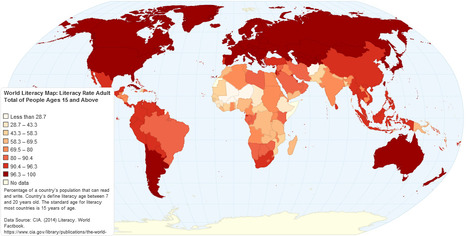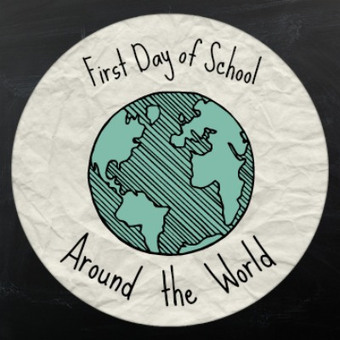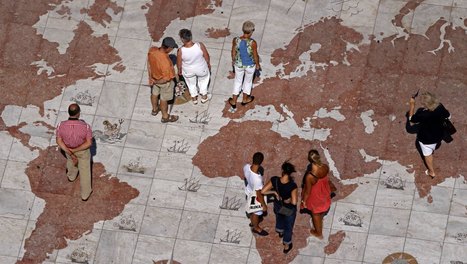Percentage of a country's population that can read and write. Country's define literacy age between 7 and 20 years old. The standard age for literacy most countries is 15 years of age.
Tags: education, K12, development, map, worldwide.
Via Clairelouise, Mike Busarello's Digital Storybooks



 Your new post is loading...
Your new post is loading...











My 10 year-old daughter was looking in our atlas a while back (yes, she is my daughter) and in the encyclopedic entry of each country she started noticing that literacy rates were included. She started asking about which regions had higher and lower literacy rates. This became a teaching moment about the power of the map--I explained that all this data can be more easily accessed and seen on a map and this interactive map is what we discovered. We need to help student find the maps and data to answer their questions (and we need to make sure that they are curious enough to ask questions about the way the world works).
My 10 year-old daughter was looking in our atlas a while back (yes, she is my daughter) and in the encyclopedic entry of each country she started noticing that literacy rates were included. She started asking about which regions had higher and lower literacy rates. This became a teaching moment about the power of the map--I explained that all this data can be more easily accessed and seen on a map and this interactive map is what we discovered. We need to help student find the maps and data to answer their questions (and we need to make sure that they are curious enough to ask questions about the way the world works).
My 10 year-old daughter was looking in our atlas a while back (yes, she is my daughter) and in the encyclopedic entry of each country she started noticing that literacy rates were included. She started asking about which regions had higher and lower literacy rates. This became a teaching moment about the power of the map--I explained that all this data can be more easily accessed and seen on a map and this interactive map is what we discovered. We need to help student find the maps and data to answer their questions (and we need to make sure that they are curious enough to ask questions about the way the world works).